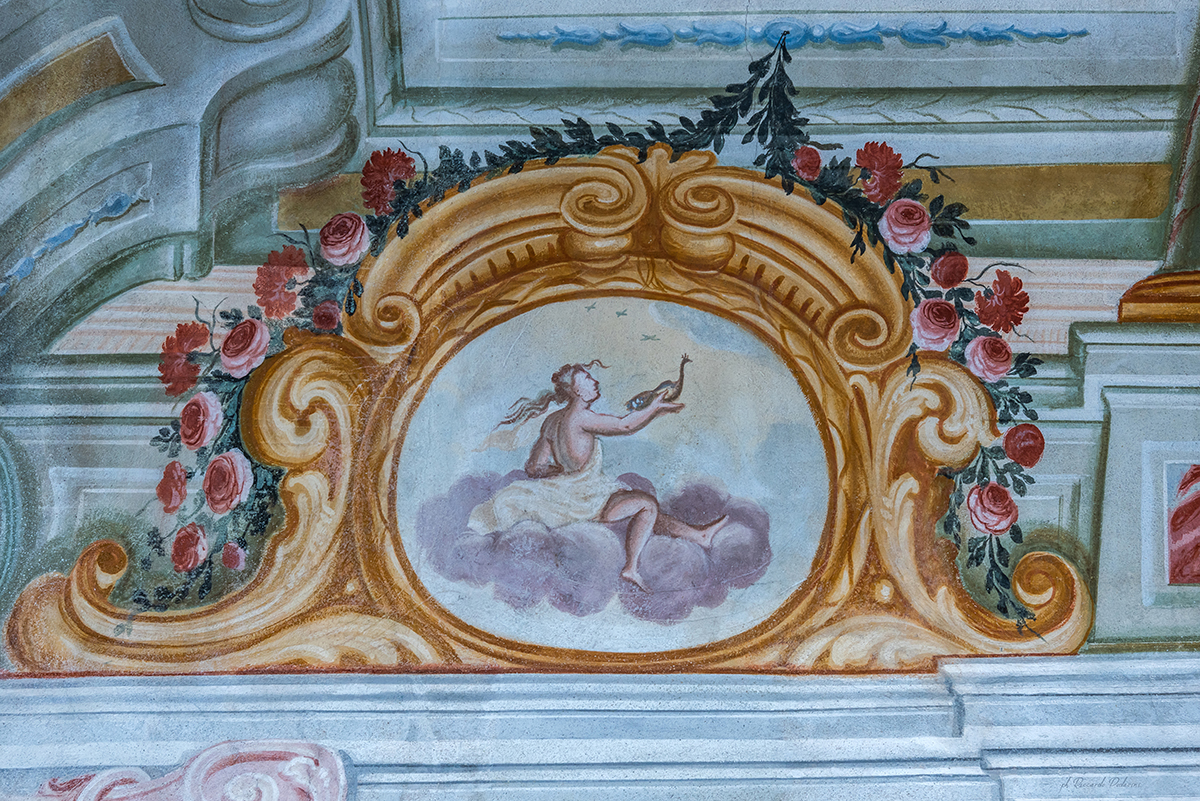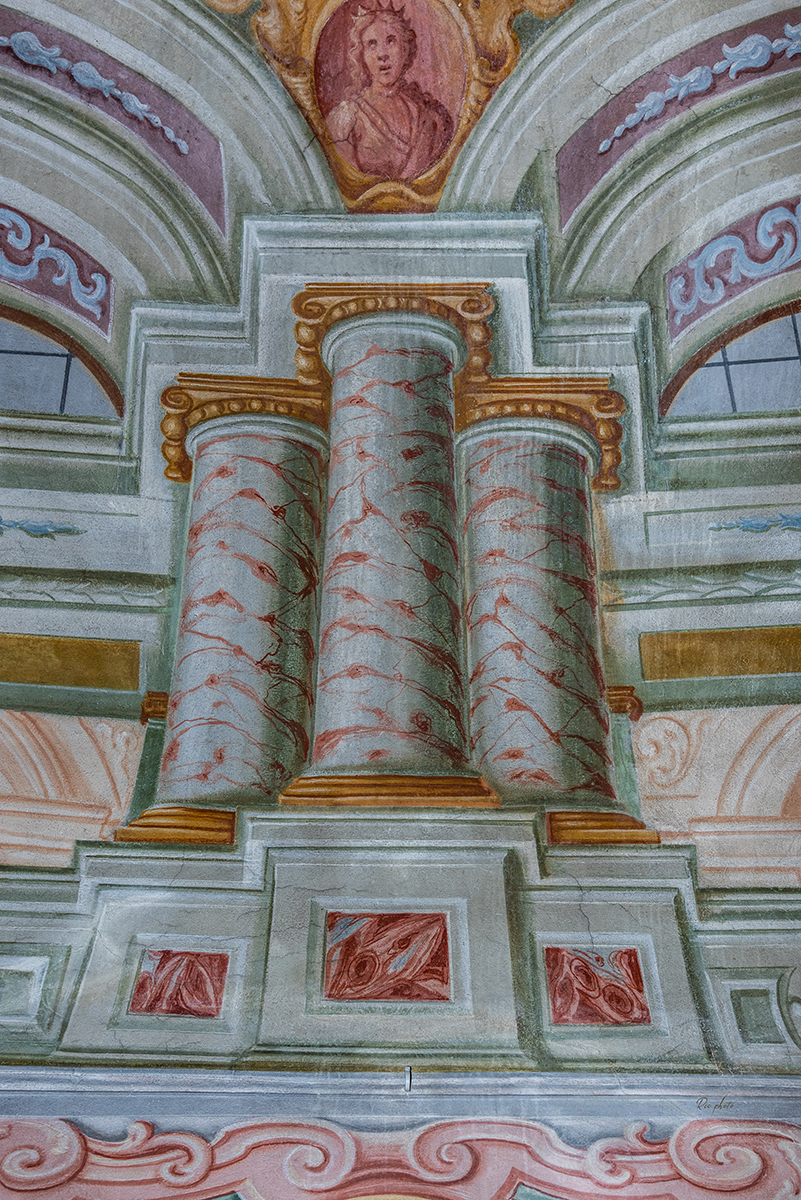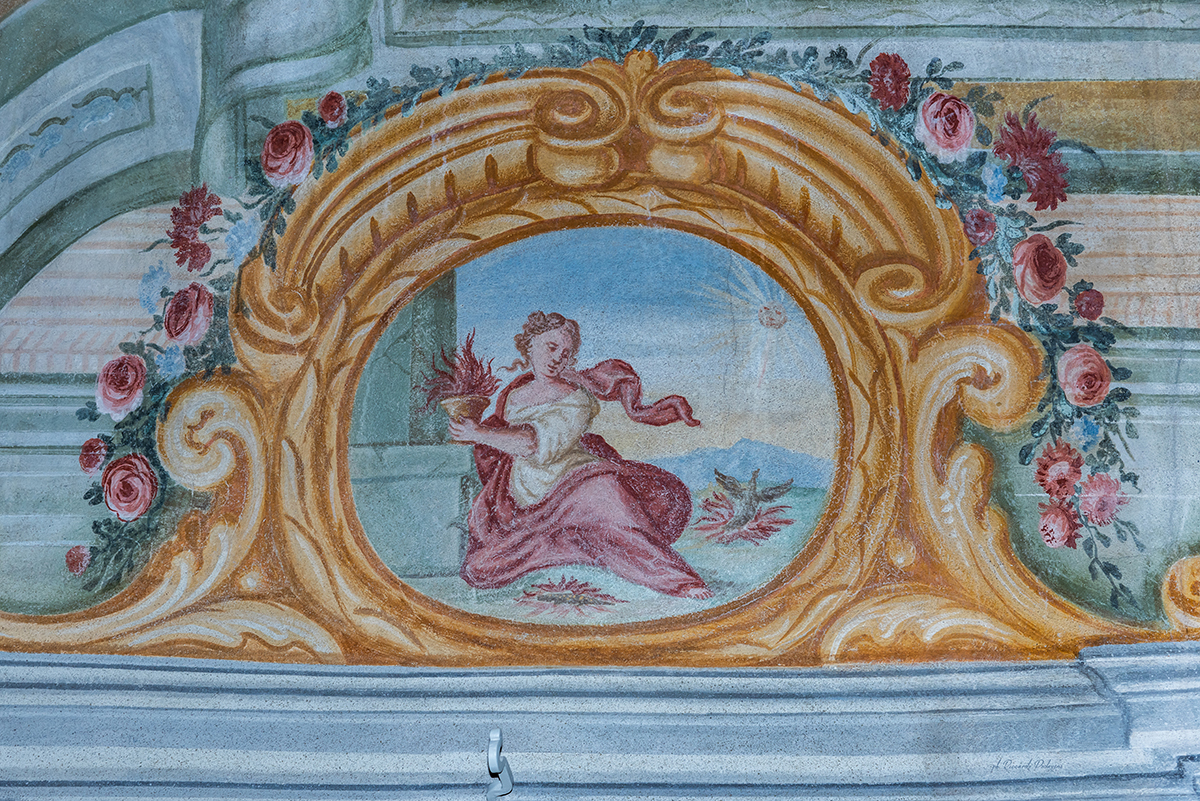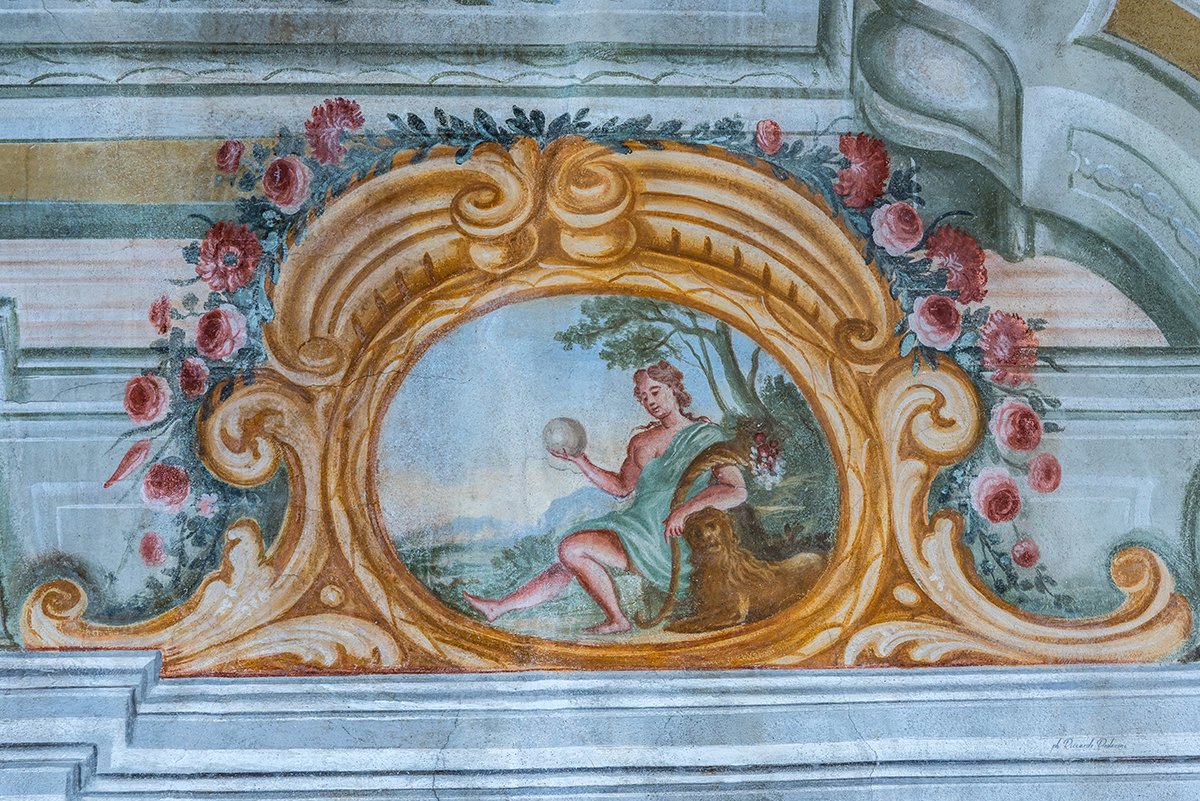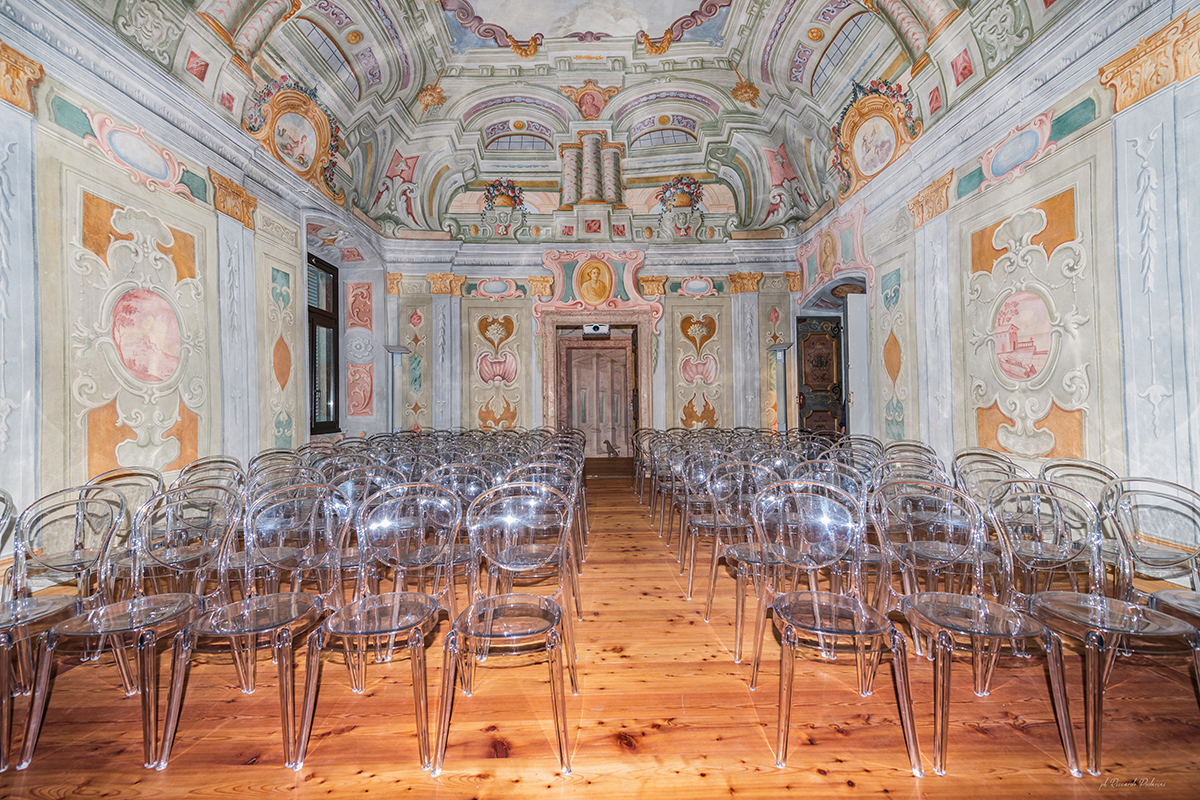 Palazzo Gonzaga
Palazzo Gonzaga
Dettagli della decorazione della Stanza di Ganimede nel palazzo Gonzaga.
Alcune stanze del palazzo Gonzaga conservano ancora la decorazione originaria. La più ricca è senz’altro la stanza di Ganimede che prende il nome dalla raffigurazione presente sulla volta. L’immagine è inquadrata da una finta prospettiva che riproduce una serie di arcate illusionisticamente sostenute da colonne (1) tra le quali corrono balaustre abbellite da vasi di fiori. In questa ricca e variopinta architettura barocca sono inseriti quattro medaglioni raffiguranti i quattro elementi: terra, acqua, fuoco e aria.
Curiosità: Il dettaglio che stai osservando raffigura l’elemento dell’aria, impersonificato da una donna distesa su una nube che stringe tra le mani un pavone. L’acqua è invece rappresentata da una divinità, data la zona potremmo pensare al dio Benaco, protettore delle acque del Garda, adagiato su un’anfora e accompagnato da un mostro marino. La terra è una donna che reca tra le mani un globo e una cornucopia di fiori con un fiero leone accovacciato ai suoi piedi. Infine il fuoco: una donna con un vaso dal quale escono fiamme e fulmini, accompagnata dall’araba fenice.
 Gonzaga Palast
Gonzaga Palast
Details der Dekoration des Raumes von Ganymed im Gonzaga Palast.
In einigen Räumen des Gonzaga-Palastes ist die ursprüngliche Dekoration noch erhalten. Das reichste ist zweifellos den Raum von Ganymed, der seinen Namen von der Darstellung auf dem Gewölbe hat. Das Bild wird von einer falschen Perspektive eingerahmt, die eine Reihe illusionistischer Bögen reproduziert, die von Säulen (1) getragen werden, zwischen denen mit Blumenvasen verzierte Balustraden verlaufen. In diese reiche und farbenfrohe Barockarchitektur sind vier Medaillons eingefügt, die die vier Elemente darstellen: Erde, Wasser, Feuer und Luft.
Neugier: Das Detail, das Sie betrachten, zeigt das Element Luft, das von einer Frau dargestellt wird, die auf einer Wolke liegt und einen Pfau in den Händen hält. Das Wasser wird stattdessen von einer Gottheit repräsentiert, da wir uns den Gott Benaco vorstellen können, der die Gewässer des Gardasees beschützt, auf einer Amphora liegt und von einem Seeungeheuer begleitet wird. Die Erde ist eine Frau, die einen Globus und ein Füllhorn von Blumen in den Händen hält, zu deren Füßen ein stolzer Löwe hockt. Endlich das Feuer: eine Frau mit einer Vase, aus der Flammen und Blitze hervorkommen, begleitet von einem Phönix.
 The Gonzaga family palace
The Gonzaga family palace
Some of the paintings in the palace are still mostly intact, preserving the original feature.
The room of Ganimede is richly decorated with frescoes and takes its name from the illustration on the arch, a fake perspective sets representing columns giving the visitors the illusion of supporting an arcade made up with balustrades full of flower vases. This is a classic Baroque architecture, sumptuously decorated, including four medallions, each one representing an element: earth, water, air and fire
Interesting facts: This detail is from the air representation, a woman on a cloud holding a peacock in her hands. As for the water element, it might be a painting representing the Lake God Benacus, protector of the waters, lying down on an amphora (an ancient Greek vase) with a mythological creature by his side. The earth is a woman holding a globe and the horn of plenty with a noble crouching lion at her feet. Lastly a fire element representation: a woman carrying a vase of flames and lightning bolts with the phoenix by her side.
